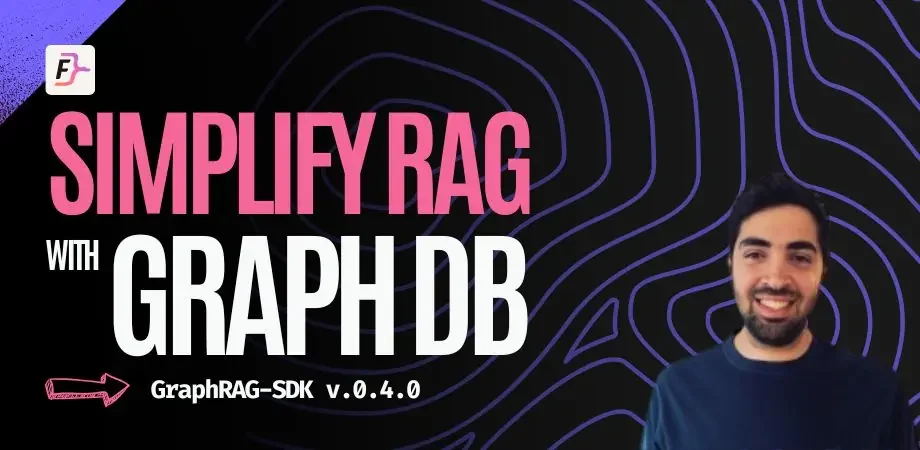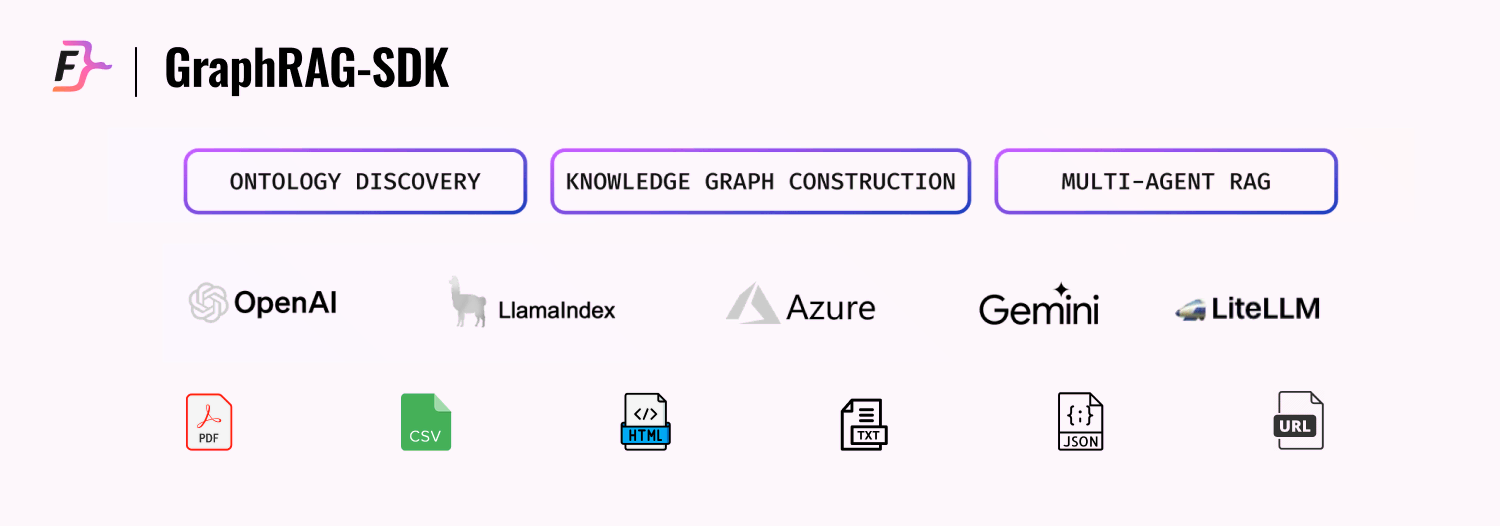Hey fellow developers! 👋
We’ve just rolled out version 0.4.0 of GraphRAG-SDK, and I’m excited to share what’s new.
If you’ve been wrestling with graph structures in your LLM-powered apps, this might be right up your alley.
What’s GraphRAG-SDK?
It’s our open-source toolkit designed to simplify building RAG (Retrieval-Augmented Generation) applications using graph databases. We created it after noticing many developers struggling to effectively use graph structures in their LLM projects.
What’s New in 0.4.0?
- Multi-LLM Support: Now works with OpenAI, Anthropic, and Cohere with LiteLLM
- Smarter Queries: Improved query planning for more efficient graph traversals
- RAG Utilities: New functions to streamline common RAG operations
- Better Docs: Enhanced documentation and examples to get you up and running quickly
How It Works
GraphRAG-SDK breaks down the RAG process into three main steps:
- Creating Ontologies: Automate or manually define your data structure
- Building Knowledge Graphs: Construct, query, and manage graphs optimized for retrieval
- Querying Your Graph RAG: Interact with your knowledge graph using natural language
Here’s a quick example of how you might use it:
# Set up your knowledge graph
kg = KnowledgeGraph(
name="movie_kg",
model_config=KnowledgeGraphModelConfig.with_model(model),
ontology=ontology,
host="127.0.0.1",
port=6379
)
# Process your data sources
kg.process_sources(sources)
# Start a chat session
chat = kg.chat_session()
response = chat.send_message("Who directed The Matrix?")
print(response)
Why GraphRAG-SDK?
It lets you focus on your application logic rather than getting bogged down in the details of graph operations or LLM interactions. Whether you’re building a movie recommendation system or a complex knowledge base, GraphRAG-SDK aims to make the process smoother.
If you’re curious about how this could fit into your project or just want to chat about RAG systems and graph databases, feel free to check out the GitHub repo or join our Discord. We’re always happy to geek out about this stuff!
What are your thoughts on using graph structures for RAG applications? Any cool projects you’re working on where this might be useful?
Integration with LiteLLM
GraphRAG-SDK’s integration with LiteLLM addresses several key challenges for developers working on RAG applications:
Flexible Model Selection
The integration allows developers to easily switch between different language models for knowledge graph generation and retrieval.
This flexibility is significant because:
- It enables optimization of model selection based on specific task requirements
- Developers can experiment with various models without extensive code changes
- It future-proofs applications as new models become available
Simplified Deployment
LiteLLM acts as an abstraction layer, providing a unified interface for multiple LLM providers. This simplification:
- Reduces the complexity of managing multiple API integrations
- Streamlines the deployment process across different environments
- Allows for easier scaling and model updates
Improved Maintainability
With a standardized interface for multiple LLM providers, developers can:
- More easily update and maintain their RAG applications
- Reduce the risk of vendor lock-in
- Quickly adopt new models or providers as they emerge in the market
This integration significantly enhances the developer experience, allowing for more efficient, flexible, and powerful RAG applications while addressing common challenges in model selection, deployment, and maintenance.
Cost Optimization
By facilitating easy model switching, the integration helps developers:
- Select cost-effective models for different stages of the RAG pipeline
- Optimize resource usage based on performance requirements
- Potentially reduce overall operational costs
Getting Started
GraphRAG-SDK aims to streamline the development process for RAG applications, allowing developers to focus on application logic rather than the intricacies of graph operations or LLM interactions. It provides a set of tools and abstractions that simplify the creation of RAG systems capable of handling complex, interconnected data. Check out the repo and get started now.
Please consider leaving a ⭐️ to support our work!

